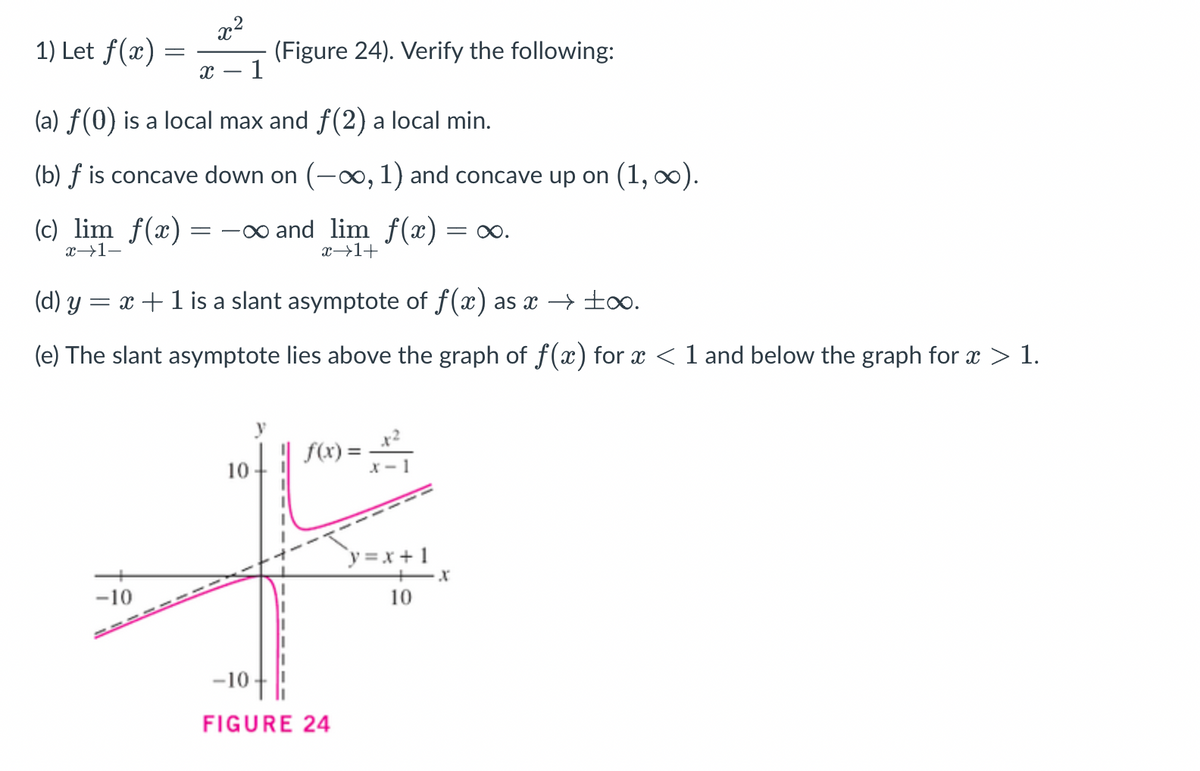(b) f is concave down on (-∞, 1) and concave up on (1, ∞). (c) lim f(x) = -∞ and lim f(x) = ∞. x-1- x+1+ (d) y = x + 1 is a slant asymptote of f(x) as x → ∞. (e) The slant asymptote lies above the graph of f(x) for x < 1 and f(x) = 10 -10 -10 FIGURE 24 2/7 y=x+1 10
(b) f is concave down on (-∞, 1) and concave up on (1, ∞). (c) lim f(x) = -∞ and lim f(x) = ∞. x-1- x+1+ (d) y = x + 1 is a slant asymptote of f(x) as x → ∞. (e) The slant asymptote lies above the graph of f(x) for x < 1 and f(x) = 10 -10 -10 FIGURE 24 2/7 y=x+1 10
Chapter3: Functions
Section3.3: Rates Of Change And Behavior Of Graphs
Problem 2SE: If a functionfis increasing on (a,b) and decreasing on (b,c) , then what can be said about the local...
Related questions
Question

Transcribed Image Text:x²
1) Let f(x) =
=
(Figure 24). Verify the following:
x - 1
(a) f(0) is a local max and ƒ(2) a local min.
(b) f is concave down on (-∞, 1) and concave up on (1, ∞).
(c) lim f(x) = -∞ and_lim_ f(x) = ∞.
x→1-
x+1+
(d) y = x + 1 is a slant asymptote of f(x) as x → ±∞o.
(e) The slant asymptote lies above the graph of f(x) for x < 1 and below the graph for x > 1.
f(x) =
10
x-1
+
y=x+1
-10
10
FIGURE 24
Expert Solution
This question has been solved!
Explore an expertly crafted, step-by-step solution for a thorough understanding of key concepts.
This is a popular solution!
Trending now
This is a popular solution!
Step by step
Solved in 3 steps with 2 images

Recommended textbooks for you

